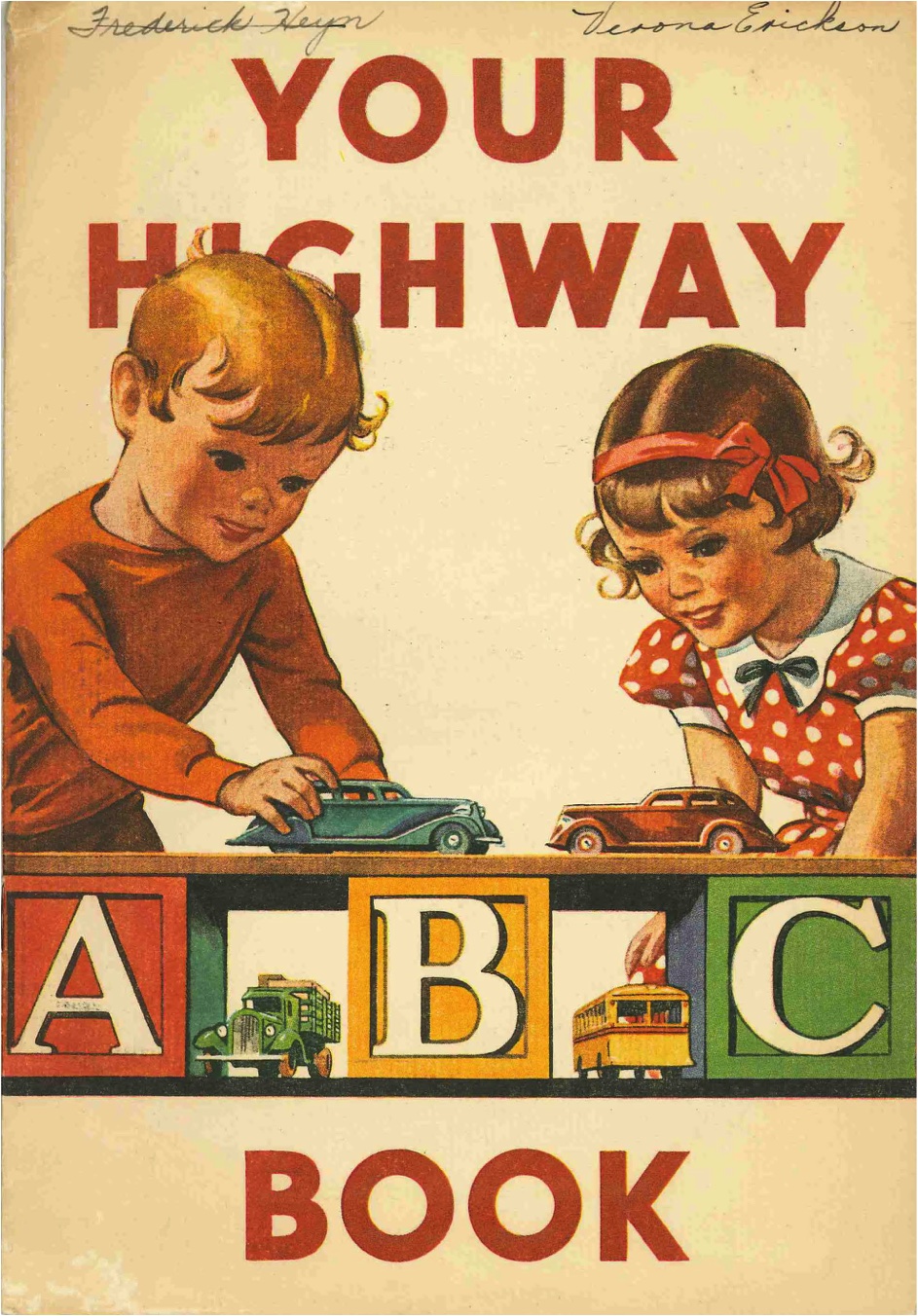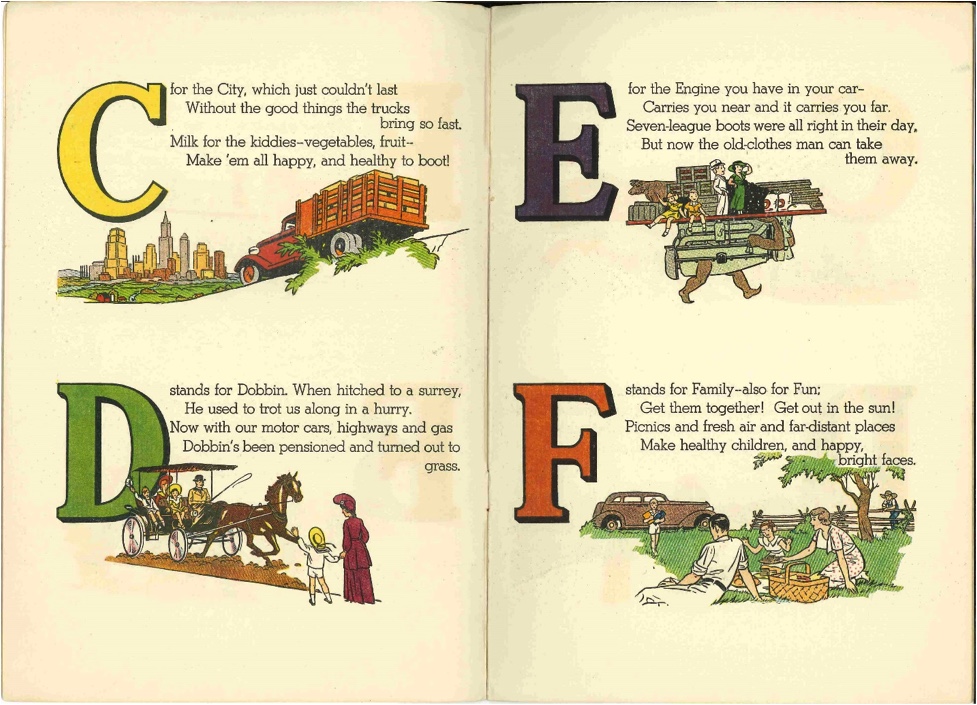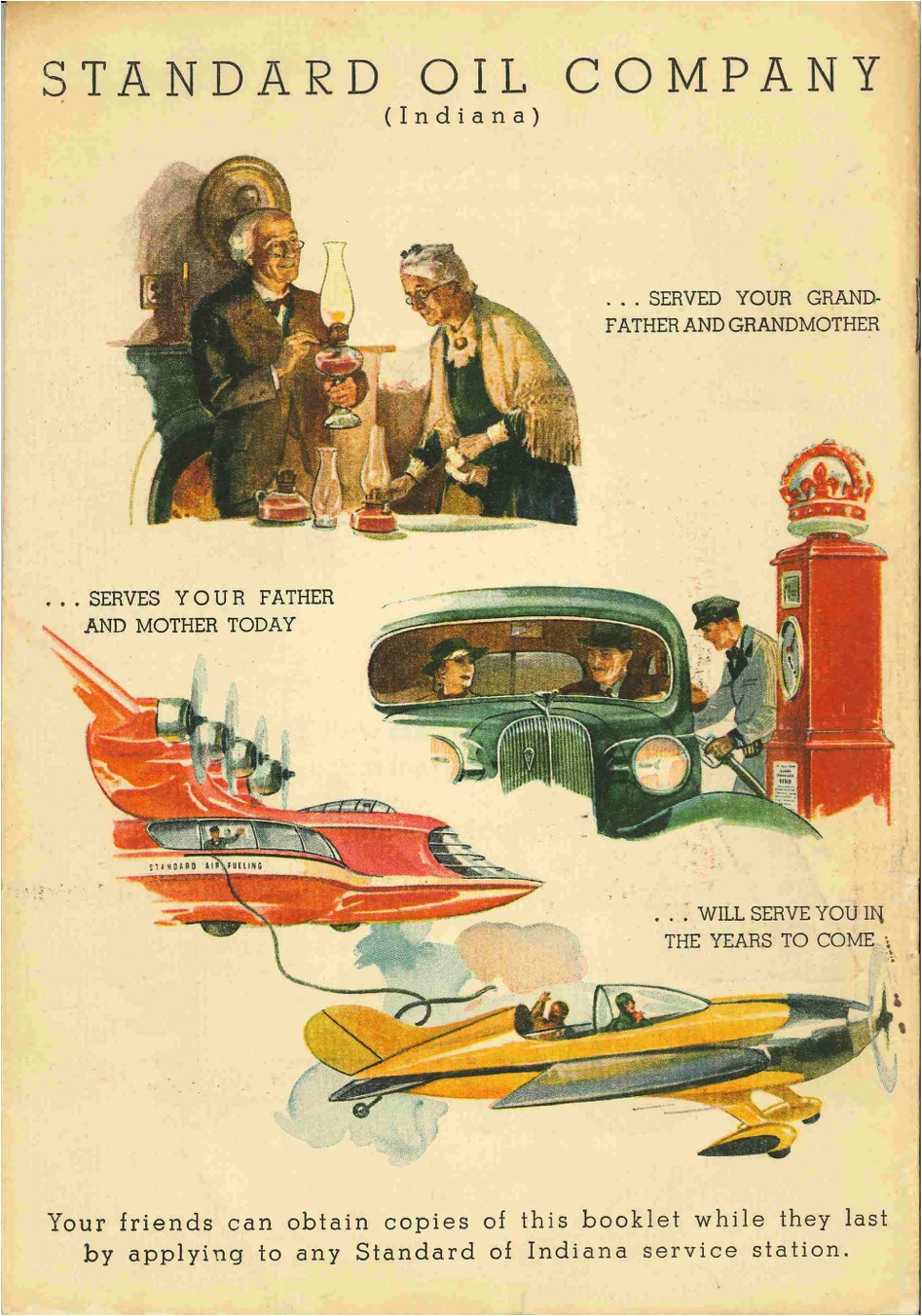Your Highway ABC Book
Several years ago, I came across an amazing vintage store find, a true treasure for an urban planning nerd like me. It is a “children’s” pamphlet of blatantly propagandistic support of our national highway system and the emerging brotherhood of motor and oil companies. Your Highway ABC Book, as it is titled, was published by the National Highway Users Conference in 1935 and distributed by the Standard Oil Company of Indiana. I wish I could share all of it, but, for copyright reasons, we only include a few pages here:




What stands out to me is the half-truths of the suggested advantages of the highway system. I will give these proponents the benefit of the doubt. They likely did not see these statements as half-truths. The technology was new and exciting. The repercussions of mobility, distance, fuel consumption, and impending road maintenance had not been explicitly tested against the endurance of the local community; therefore, access to the open road was surely a banner of opportunity, an invitation to lives of efficiency and freedom.
But, hindsight is 20/20, right? What is the other side of the story? Here are a few of the realities with which we are slowly coming to terms:
- C for the City. Turns out that not all city-dwelling kiddos receive milk, vegetables, and fruit. In reality, designing our cities for cars over people has turned zip codes into predictors of health as access to healthy food corresponds with income levels and access to transportation.
- D stands for Dobbin. Not only Dobbin has been retired and turned out to grass, but so have many of the elderly who live in our sprawling cities. Car dependency has greatly reduced the ability to age in place. By developing retirement homes, we have essentially corralled a sector of our population, isolated them from the larger community, and effectively started an epidemic of boredom and depression among the aged.
- E for the Engine. Seven-league boots are the whimsy of European folklore. When wearing these magical boots, one step was the equivalent of seven leagues, resulting in great speed. The ironic thing is that the disappearance of these boots could also bring about our corresponding decline in health due to the challenge of walking in our car-dominated towns.
- F stands for Family. Can we really say that driving to far-distant places has made for healthy children and happy, bright faces? Auto crashes are the leading cause of death among American children. Moreover, ease of mobility has led to the geographic dispersion of families, which, I would argue, contributes to our problems of social isolation and loneliness.
Unfortunately, over 80 years later, I am not sure our hindsight vision has cleared much. We are still battling to expose these benefits as only half-truths as we understand the full implications of the auto-oriented life. Will we learn that bigger is not always better? (That’s a humble question---coming from a Texan, no less!) Will growth not always equal expansion? Will proximity not be a limitation on freedom, but an invitation to invest and thrive in local places and communities?
The highway and auto-industry were keen to use the guise of a children’s book to advocate their agenda. The rhymes are catchy and influence is slyly dispensed on both adults and children as the book is read by parents to their children.
I would love to craft our own Strong Towns response to this pamphlet, Your Neighborhood ABC Book. I invite you to pass along your ideas and let’s see what we can come up with! I will start us off…
A is for alleys – streets so narrow and small,
Slowing down cars so you can play ball.
Designing more alleys is one simple way,
To make neighborhoods safer for children at play.
Add your alphabet in the comment section and if you'd like to help us put this together into a book, please email quednau@strongtowns.org.




People tend, understandably, to think they’ll be safer in an SUV—but what happens to our cities if everyone is driving a bigger vehicle?